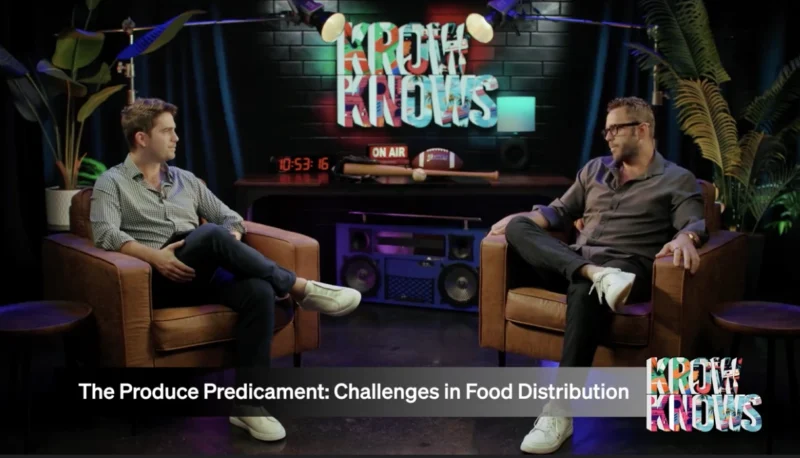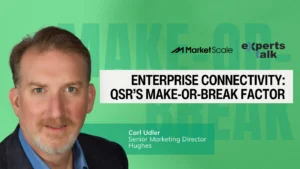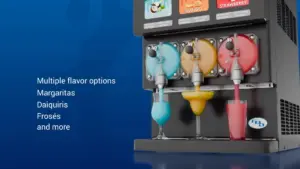How Pepsi Drinkers are Empowering Sustainable Farming
Pepsico recently announced its intentions to increase the company’s pursuit of sustainable farming. Watch or read below as Jim Andrews, Pepsico’s Chief Sustainability Officer, talks about the company’s plans to eliminate at least three million tons of emissions by 2030.
Host: You, of course, know PepsiCo as the soda snack giant, but the New York based company has a very large agricultural footprint, seven million acres it uses to grow its crops and ingredients today. While the company is announcing its long term plan for regenerative agriculture, in other words, growing crops in a way that replenishes the earth. PepsiCo says the effort will eliminate at least three million tons of emissions by 2030. Let’s talk about it more, Jim Andrews, pepsico, EVP of beyond the bottle and chief sustainability officer. Jim, I mean, wow, big targets. How costly is this to do, and how much of a reward is it to?
Andrews: Very well, thank you. And, you know, this is just intrinsically part of our business, as you said, we have a very large agricultural footprint and a lot of people don’t really know that PepsiCo is a whole lot more than a beverage company. Food and snacks are about 55% of our revenue and probably 2/3 of what we do starts in the ground. So these activities are really part and parcel of making us a stronger, more resilient company. The great thing is that as we move forward in this, you know, farmers are business people and they are looking for. How do I reduce risk and how do I increase my income? And these practices do both of those things. They help farmers be more resilient, better able to respond to climate change, but also they’re able to increase yields and reduce input costs, which helps their bottom line. So these are really positive practices for the farmers and ultimately throw flow all the way through the value chain.
Host: Well, when we talk about the bottom line, though, Jim, I mean, there are, to a certain extent, some upfront costs or at least some early costs involved in making this sort of transition. How do you sort of balance that out, not only for the farmers, but, of course, on the other end of the equation for consumers, is there a cost dynamic here that we should be aware of and that maybe we should factor into the general outlook?
“Over time, we’ve seen that these practices actually have a very positive impact on the economics for the farmer.” – Jim Andrews, Pepsico’s Chief Sustainability Officer
Andrews: The costs are up front, as you said, there. It’s really about how do we take risk out for the farmer, because over time, we’ve seen that these practices actually have a very positive impact on the economics for the farmer. And so we have a number of programs where we help reduce that risk for the farmer by my cost sharing. So we’ll give them an amount per acre for some of their acorns. And what we find is that the results are so good that they frequently go far beyond what we had originally shared costs on because they see the benefits. And so it’s a real productivity increase for them and allows them to reduce the input cost and be more resilient, which is ultimately about taking risk out. So it’s very positive. And that little up front is just in transition that, as I say, we find really good pickup as we move forward before you get to that pick up moving forward, that initial cost that you discussed, you passing that on to the consumer. The these costs are very positive to the farmer there. We have not passed any of these costs at this point on to the consumers because we see the results that get driven through our agricultural chain. If you think about a brand like walkers, you know, we’re actually moving to carbon neutral potatoes, which is our big chip brand in the UK. And there. We’re actually moving to carbon neutral potatoes where we take some of the waste products, use it for fertilizer back to the farms, reduces greenhouse gas emissions and also really creates that circularity. So the benefits are really multifold across the whole value chain.
Host: I’m interested in how much the sustainability really actually drives customer demand, though. Could you charge a premium price, for example, by demonstrating such carbon neutral potatoes, for example?
Andrews: You know, consumers, when it comes to food and beverage, consumers are always looking for a couple of things. They’re looking for great taste. And that’s obviously where as pepsico, whether it’s on our beverage products or our food products, you know, we really pride ourselves. We also have availability being where consumers want the products affordability always really important. And there’s a increasing group of consumers, and I must say importantly, our customers, our retailers who are very interested in sustainability. And as you know from all of your work, what are companies really doing to lean in to that that purpose, those things that go beyond business as usual? And so when you put that whole package together, we’re finding you know, you saw we just announced earnings recently. Business has been very strong. And it’s a combination of all of these things.
*Bloomberg contributed to this content
—
Follow us on social media for the latest updates in B2B!
Twitter – @MarketScale
Facebook – facebook.com/marketscale
LinkedIn – linkedin.com/company/marketscale









